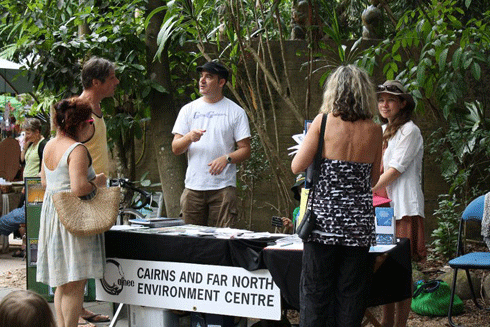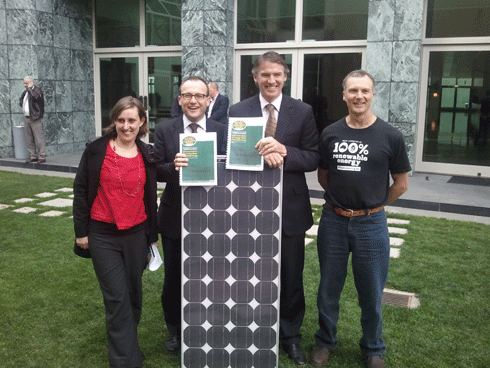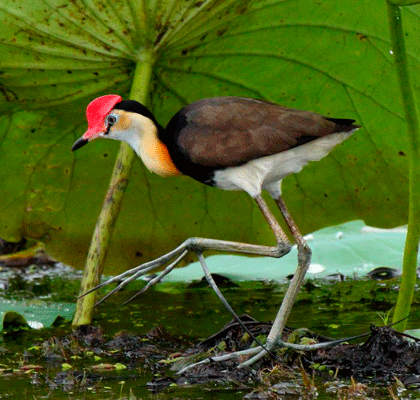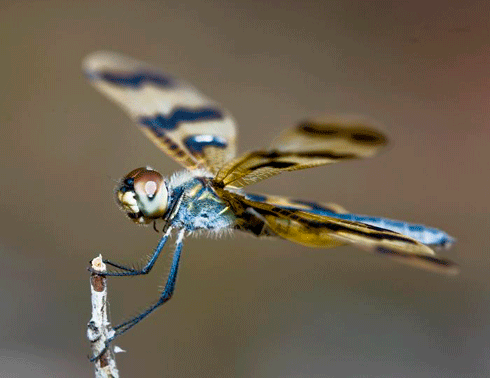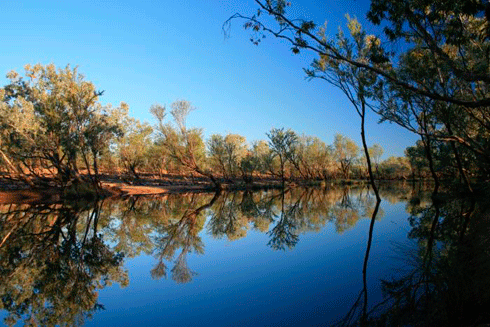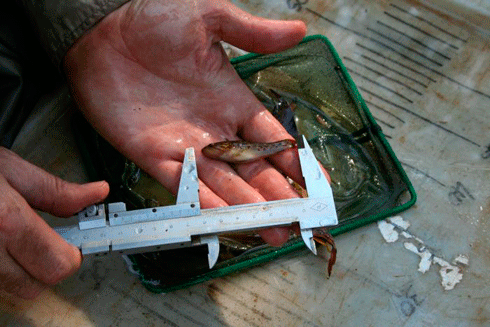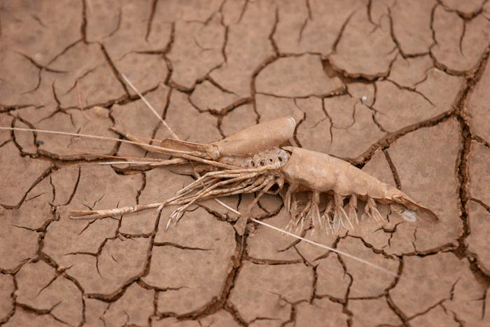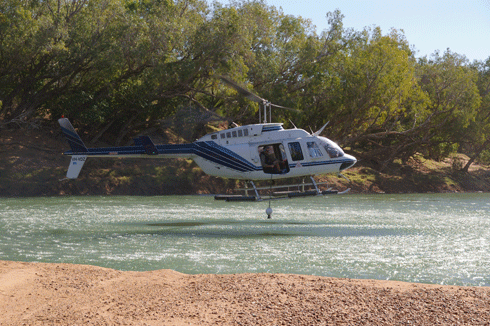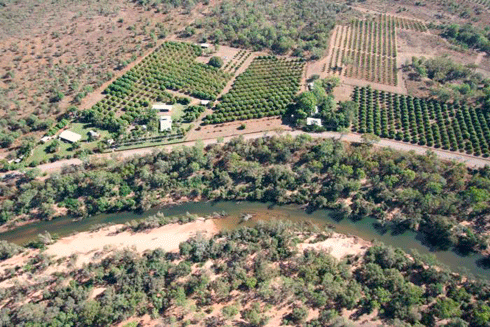
|
Published: 11 January 2012
100% Renewable campaign powered by grassroots
Australia’s 2011 Young Environmentalist of the Year is achieving national impact by uniting community climate campaigners with her inclusive, solutions-based approach.
In mid-2009, Lindsay Soutar emerged from the Marrickville office of her local Federal MP, Anthony Albanese, feeling subdued. It was the first time she had met with an MP, and she’d just presented the senior Australian Government minister with a bevy of the latest facts on climate change. After listening politely for some time, Mr Albanese (known locally as ‘Albo’) stopped her.
‘I know what’s going on with the climate,’ he stated. ‘And I know people in my electorate care about this. But our government needs to see support from people in communities and electorates beyond the inner city, before we’re able to do more.’
Reflecting on the meeting, Ms Soutar says, ‘I realised that the forces working against change were incredibly powerful. What we needed was to build people power – locally and from the ground up – that could be focused on the national decision makers.’
Two-and-a-half years later, Ms Soutar was named Australia's Young Environmentalist of the Year for her work building 100% Renewable, a grassroots campaign that coordinates the efforts of more than 100 community groups in every Australian state and territory.
Ms Soutar had noted that, as the Australian community became more aware of the dangers of climate change, many climate action and sustainability groups had started to spring up. The groups were full of committed people who were frustrated by government inaction and eager to ‘do something’, but unsure what exactly they should do.
‘When the [100% Renewable] campaign started, many grassroots activists had few experiences of campaigns with a clear structure and strategy,’ says Dr James Whelan, founder and director of The Change Agency and an early advisor to the campaign. ‘100% Renewable provided that cohesion and direction.’
Jim Rees was a case in point. Mr Rees lives outside Wagga Wagga in south-western New South Wales and is a member of Climate Rescue of Wagga (CROW). Along with seventy other groups, CROW took part in the 14 000 Conversations project in the first part of 2011. Under the initiative, more than 800 volunteers across the country were trained and equipped to strike up conversations with people in their communities about renewable energy – at front doors, community events, workplaces and even cricket matches.
‘The Conversations project attracted people to CROW who hadn’t been involved before,’ says Mr Rees. ‘They saw that their efforts would be more valuable because they were part of a larger national effort.’
The national results, which showed overwhelming public support for renewable energy, were compiled into a report that was taken to Parliament House in Canberra. It was delivered to members of the Multi Party Climate Change Committee, who were in the middle of making critical decisions on the shape of the Clean Energy Future package.
This action was accompanied by a range of other campaign tactics, including local media exposure, local meetings with politicians, phone and email blitzes to key decision makers and delivering flyers in key electorates.
‘I believe the 100% Renewable campaign was instrumental in securing $10 billion for renewable energy projects,’ says Dr Whelan.
How 100% Renewable works
All major aspects of the 100% Renewable campaign, such as strategy and tactics, are worked out through widespread consultation with those people and groups involved.
This gives participants a sense of ownership over the campaign’s direction. Even the decision to focus the campaign on renewable energy was a group decision.
‘A lot of us were becoming discouraged by scaring the pants off people when we talked about climate change,’ explains Mr Rees.
‘I was drawn to the campaign because of the positive messages. People are much more receptive to talk of hope and solutions rather than gloom and doom.’
A team of a dozen regional organisers provide the conduit between the campaign and participants. They stay in touch with the groups in their patch and keep them informed of the campaign’s activities, providing training and assistance to local contacts.
‘Identifying and nurturing leadership in local communities is incredibly important,’ comments Ms Soutar. ‘These leaders not only help run their own groups, but often go on to nurture the talent within their own group and so on. It’s a virtuous circle.’
A notable feature of the campaign is its strong presence outside capital cities, with many active participants working in rural and regional areas.
John Connor, CEO of The Climate Institute, sees this as an important part of the campaign. ‘They’ve demonstrated support for renewables in unexpected places, such as Armidale in Tony Windsor’s electorate, where they held a very successful public forum,’ he says.
Mr Connor regards 100% Renewable as part of a ‘welcome flowering’ of new organisations in the climate movement. ‘Their strength is their simple and clear message, which is important in a complicated debate.’
By contrast, Dr Whelan – a social movement researcher and theorist with more than 30 years’ experience in grassroots campaigning in Australia – sees 100% Renewable presenting a challenge to the way the community has been represented in the climate change debate.
‘For more than two decades, the non-government organisations working for action on climate change believed that communicating climate science politely to politicians would bring about the necessary changes in public policy,’ says Dr Whelan.
‘We know now that their confidence was misplaced. It's time for the community to hold Canberra to account: to demonstrate that failing to act on climate change is not an option and that there will be political consequences.’
Either way, Ms Soutar is heartened by the campaign’s progress.
‘It’s a great feeling to know that it’s not just me going to see Albo in inner Sydney anymore,’ she says. ‘There are groups in Cairns, in Port Macquarie, in Ballarat, in Perth, all telling their local MPs to get on with the job of building renewable energy.’
Deep commitment
Helping ordinary people have a say in their energy future has motivated Ms Soutar since she spent five years working in the Mekong region with communities fighting hydropower developments.
She left her job as a geographer with the Australian Mekong Resource Centre at The University of Sydney to establish 100% Renewable.
‘While I felt that research played a critical role, I wanted to get my hands dirty and start to change the power structures that kept energy decisions out of ordinary people’s hands,’ she says.
While she takes some credit for her Young Environmentalist of the Year award, she sees it primarily as ‘a validation of the work being done, day-in and day-out by volunteers at the grassroots level.’
But Dr Whelan says Ms Souter’s role has been important. ‘Like many natural leaders, Lindsay would say that the campaign's success isn't about her qualities or actions – and she'd be right. Equally, though, her dedicated, patient and humble leadership has fuelled and steered the campaign. Her political instinct and passion are remarkable.’
Building on the campaign’s achievements remains Ms Soutar’s focus. ‘Anyone can join. In 2012 we’ll be focusing on building big solar in Australia. The more people who get on board, the better the chances of seeing large-scale solar plants starting to appear around this continent: the sunniest on the planet.’
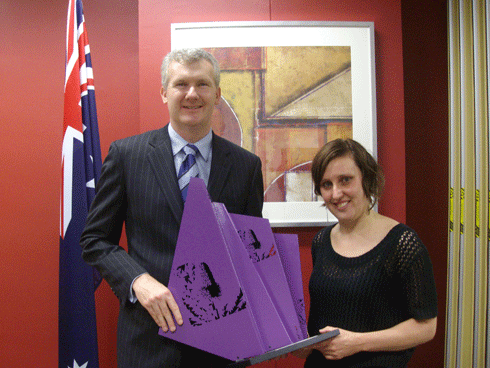
|
|
Lindsay Soutar receives the 2011 Young Environmentalist of the Year Award from Federal Environment Minister, Tony Burke. Credit:
Office of Tony Burke
|
More information:
Twitter: @100renew
Facebook: 100renew



